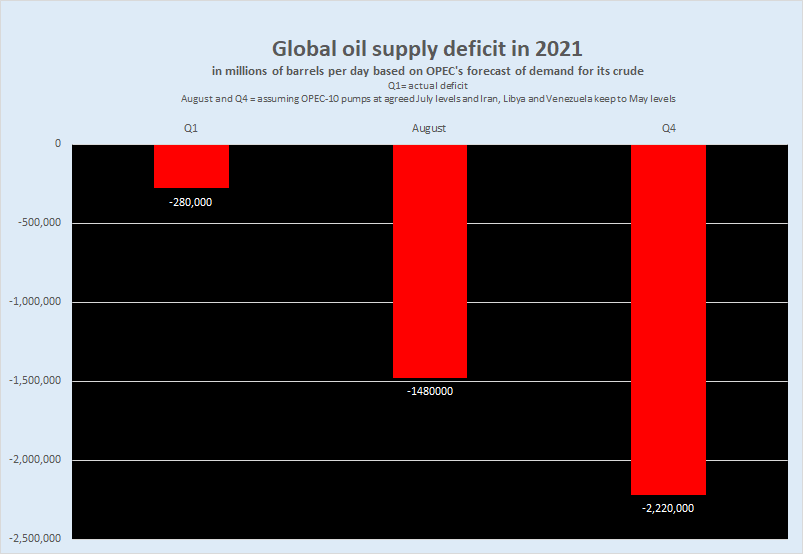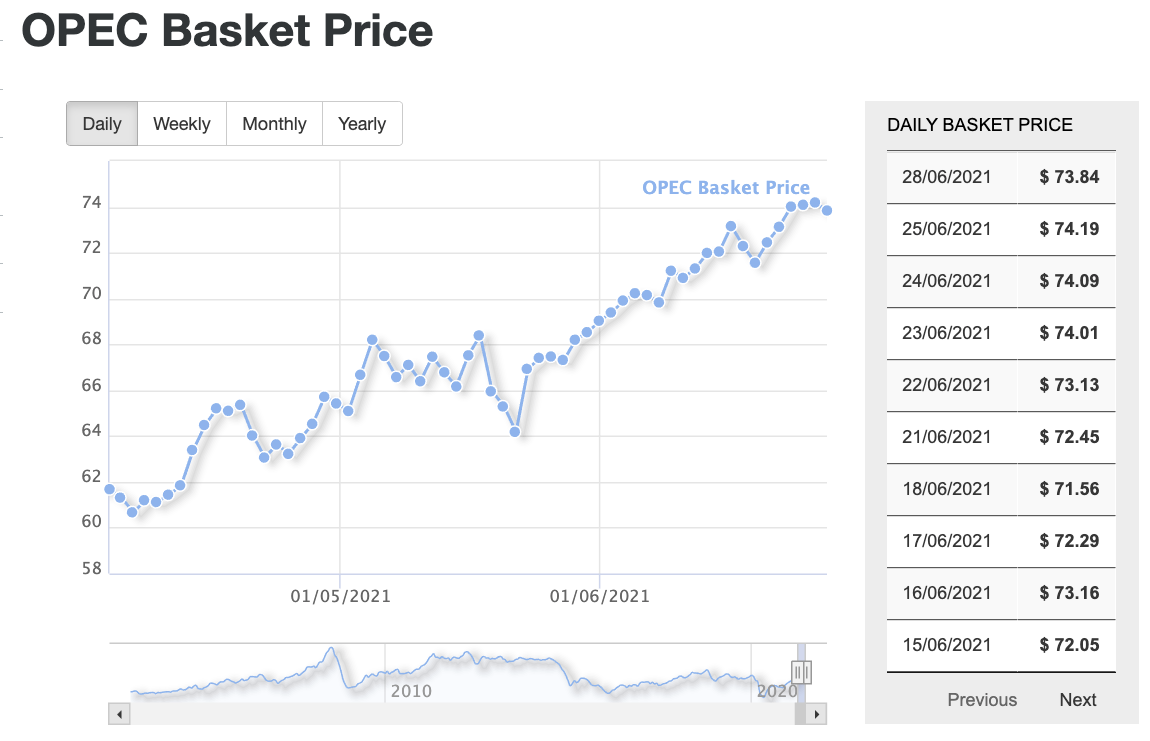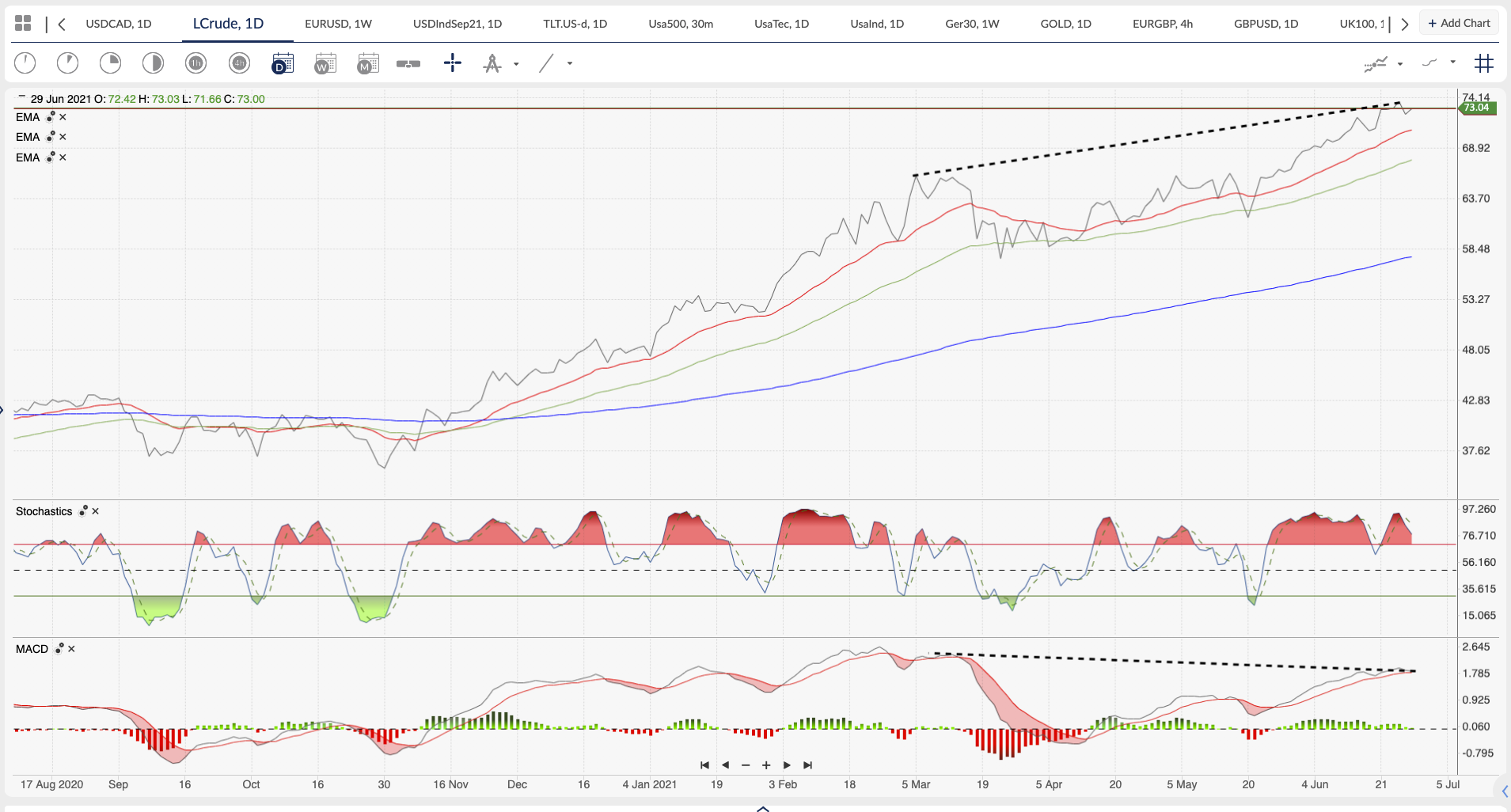Weekly Commodity Analysis
OPEC+ is a group of 24 oil-producing nations, made up of the 14 members of the Organization of Petroleum Exporting Countries (OPEC), and 10 other non-OPEC members, including Russia. The OPEC bloc is nominally led by Saudi Arabia as they are the largest oil producer, while Russia is the biggest player among the non-OPEC countries.
OPEC+ was founded to coordinate oil production among the countries in a bid to stabilize prices. Since then, the group has reached deals for members to voluntarily cut and ramp-up production in response to changes in global oil prices, when they argue about what is necessary the co-operation goes out the window and we have situations where oil futures can go below $0. Having them co-operate is definitely a good thing for the volatility within the markets.
This Thursday OPEC+ once again gather around a virtual table and decide on the upcoming oil production numbers. In last month’s meeting minutes global demand was anticipated to have declined by 9.3 mb/d in 2020, while total global oil consumption for previous year was expected to average 90.6 mb/d.
Due to the ongoing pandemic disruptions 2021’s oil demand growth was kept unchanged.


OPEC’s latest forecast for demand of its crude suggests, if output levels stay the same, OPEC supply will fall short of expected demand by 1.5 million bpd in August. The shortfall widens to -2.2 million bpd in the fourth quarter of 2021.
There was an air of optimism that the pandemic restrictions were being lifted as vaccination programmes were rolled out to protect the most vulnerable, and April’s demand for oil was positive which gave OPEC+ confidence to stick with the gradual increase in production through 2021. They are likely to keep increasing output monthly based on their biased assessment of how much oil will be needed based on their current models.
Unfortunately, a lot has happened in the last month as the COVID-19 Delta variant is causing concerns for governments around the globe. Further domestic travel restrictions are being imposed to keep the infection rates down, but the UK, Japan, and Australia, just to name a few of the countries other than India where the Delta variant was found, are going to see higher restrictions on movement and this will have a greater impact on the global demand for oil.
A couple of weeks ago the International Energy Association (IEA) Oil Market Report (OMR) stated that global oil demand was set to return to pre-pandemic levels by the end of 2022, and that world oil supply was expected to grow at a faster rate in 2022, with the US driving gains of 1.6 mb/d from producers outside the OPEC+ alliance.


The US Energy Information Agency (EIA) report last week stated, “distillate demand returned to 2019 levels earlier than gasoline and jet fuel demand.” Increasing travel and economic activity in the United States contributed to greater levels of demand for gasoline, distillate, and jet fuel. The 4-week average though was under the previous year’s levels signalling the market was not fully back to how it was pre-coronavirus. Especially the Jet fuel which was hardest hit this last 14 months.
With the optimism in demand and a relatively tight market over the past few months, crude prices rose, and backwardation steepened on both benchmark crude futures contracts. This is reflecting anticipation of tighter markets in the months ahead.
Backwardation is when the current price for oil is higher than prices trading in the futures market. The reasons for higher prices near term could be due to increased demand today due to a supply shock or event. But usually something that is in plenty of supply and will cost more to store will be in contango, which is when the current spot price is lower than the cost of purchasing the asset in the futures markets.
There are different contracts and benchmarks for pricing oil, the ActivTrader platform has a contract for difference called LCrude, which is tracking the prices of Light Crude spot prices, though you could trade a Light Crude August contract which follows the underlying futures asset.
There is also Brent which is a light crude oil, but it is not as light as West Texas Intermediate (WTI). Brent is also typically refined in Northwest Europe. Another way to gain exposure to the oil markets could be through an exchange traded product like USO, which is the US oil fund. This contract aims to provide investment results corresponding to the daily price movements of West Texas Intermediate (WTI) light, sweet crude oil.


OPEC have their own benchmark based on the OPEC Reference Basket (ORB), which was introduced in 2005 and made up of 13 oil producers’ oil, and while the US dollar is the global reserve currency, the ORB is priced in US dollars as is WTI and Brent. Generally, the price of an oil contract rises and dips in unison with each other contract, but there may be a way to use arbitrage or spread trade to limit risk, as the energy sector can be volatile as seen last spring.
See real-time quotes provided by our partner.
On the Daily chart for WTI yesterday’s price action was a sign of what is to come if the Delta Variant causes more sustained disruptions. But like all dips so far in June, the price action to the upside is very dominant and the momentum is strong, and any weakness is quickly reversed. It would currently take a break lower than the previous swing low formed on the 17th/18th June before the bears would have a sense of a change in direction but even that could be short lived as the daily 50 exponential moving average has provided very strong support since it crossed the daily 200 ema in November 2020.
If OPEC+ were to signal that they are worried about the global demand due to reasons previously discussed, this could signal to the weak hands that demand is really going to drop off, as if anything OPEC should always be talking up their book, even if they do not fully believe in it. If they were to even drop the talk of a supply deficit beyond August, the oil contracts would likely fall hard. Especially as the US dollar is refusing to test lower and each day looking more likely to close above the daily 200 ema and carry on higher.
See real-time quotes provided by our partner.
The energy markets are currently looking very bullish with a couple of exceptions. The stochastic is overbought, which in a trending move a lot of traders would ignore, but if you were to use that indicator in these market conditions it has clearly signalled a buy the dip better than a sell the top.
The MACD has not been able to create a higher cycle high, so now it is currently showing daily divergence to price. Price is grinding higher, but the MACD is signalling without any real strength.
The fundamentals rather than indicators are going to drive the energy markets higher or lower, and the US dollar will have an impact on how swift these moves occur. My current bias is that the market is tight, so we should have higher prices with continued rises in demand. But if the UK were to extend lock down across the summer holidays, or if Europe closed its borders, or maybe India’s cases spiked. We could have reason to believe demand was not going to meet the oil producing nations expectations. For now, it is ‘buy the dip’, with one eye on forward guidance on production flows and the news.






